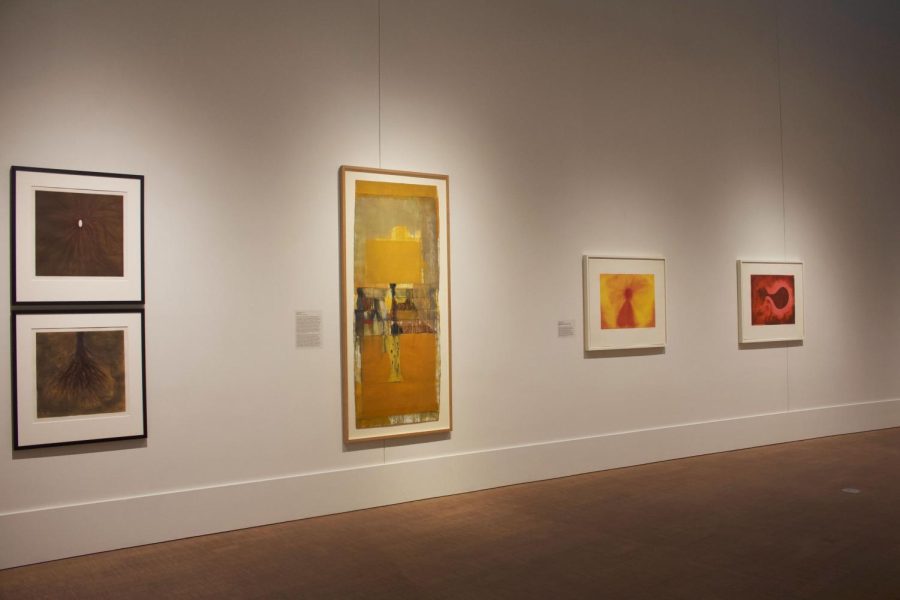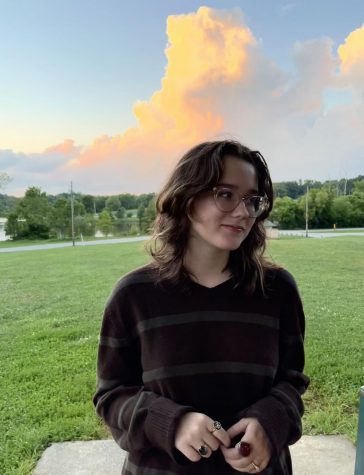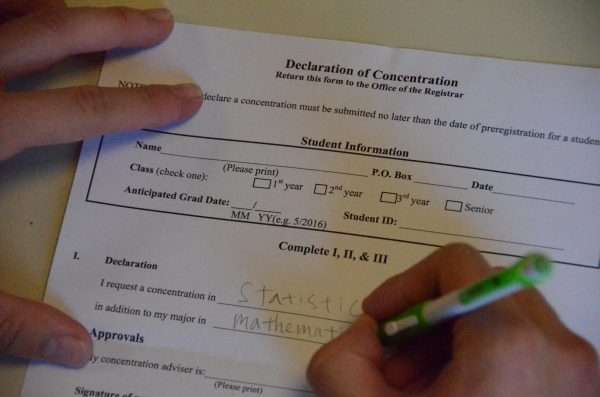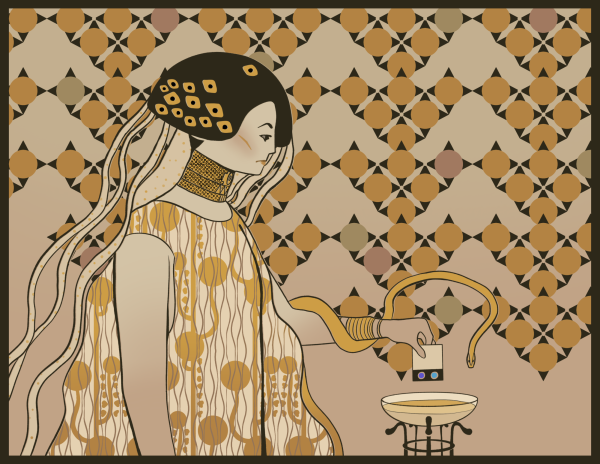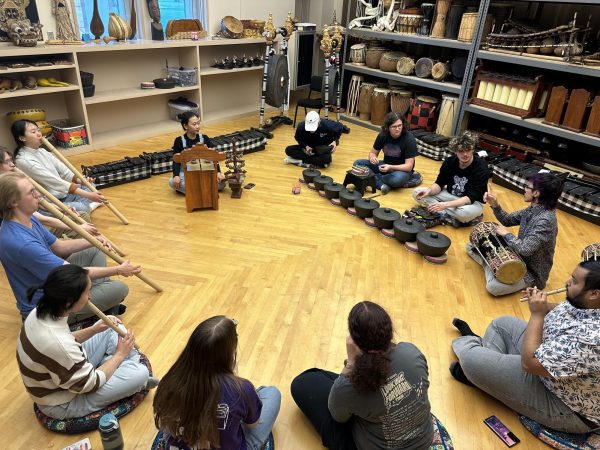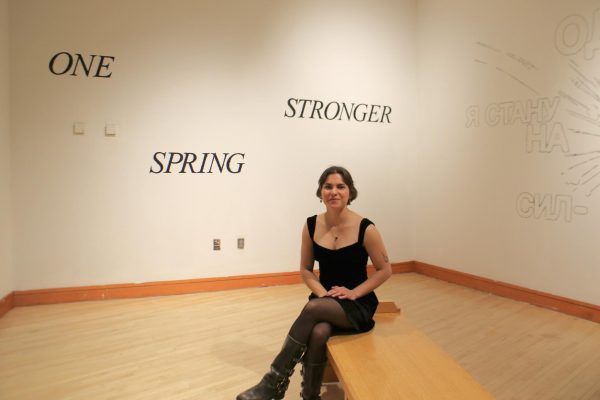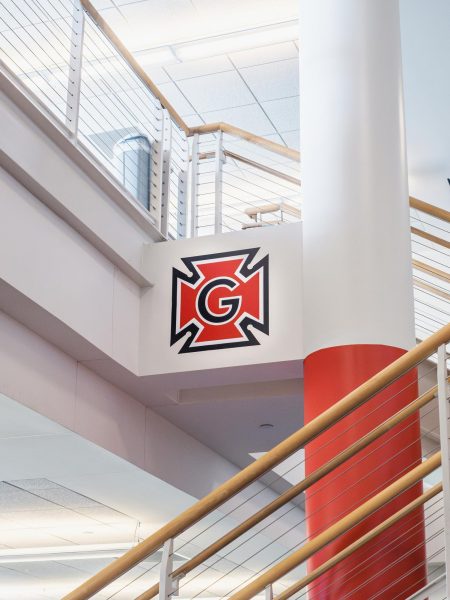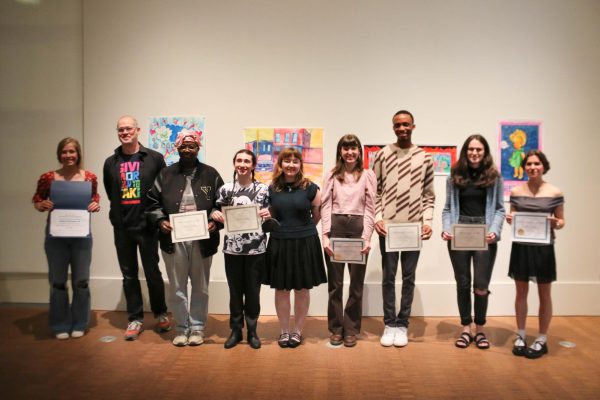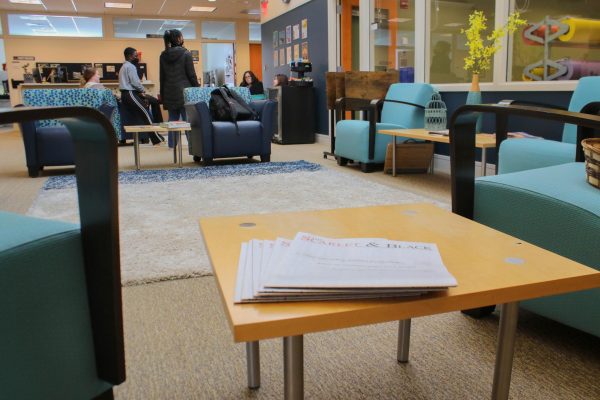“Paper Trails” explores art in postcolonialist India
“Paper Trails” showcases the diversity of contemporary Indian art.
October 3, 2022
Sudhir Patwardhan’s 2003 painting, titled “Wounds II,” shows a faceless figure contorting its body, writhing in pain, covered only by bandages. In her commentary on the piece, Tamara Sears, professor of art history at Rutgers University in New Brunswick, said that the figure “evokes a sense of deep suffering and excruciating pain.” “Wounds II” is one of the works featured in “Paper Trails,” a new exhibition at the Grinnell College Museum of Art.
“Wounds II,” according to Sears, tells a broader story of India during the 20th century– a tale of decolonization, famine, violence and oppression. “Paper Trails,” a collection showcasing over 90 contemporary Indian artworks created after the country declared independence in 1947, tackles these themes through the lens of modern art.
“Paper Trails” is the product of a collaboration between Sears and Grinnell Professor of Art History Michael Mackenzie. The exhibit’s current form is a second version of the original curated by Sears and her students in a graduate-level curatorial studies seminar at Rutgers.
After its initial showing, the exhibition was revised by faculty and students at both Rutgers and Grinnell. Last semester, Mackenzie’s class at Grinnell, The Art of Decolonization: Modern and Contemporary Art of India and South Asia, analyzed several pieces included in “Paper Trails,” and they wrote texts to accompany the artworks, detailing their significance pertaining to Indian history.
Typically, the process of curating an exhibition can take years, but Sears and her graduate students created the initial draft of “Paper Trails” in three months. “For my students, it was not only a way to think through the parameters of an exhibition but also a process of learning content,” said Sears. “The exhibit really came out of pedagogy.”
All of the pieces in “Paper Trails” come from Umesh and Sunanda Gaur’s collection of contemporary Indian art. This is the second time that pieces from the Gaurs’ collection have been shown at Grinnell – in 2017, Grinnell hosted “Many Visions, Many Versions,” an exhibition of art belonging to the couple by indigenous Indian artists.
“Paper Trails” features artworks created after India’s era of British colonization formally ended in 1947. Following independence, India began a period of partitioning which caused violence between various religious groups in South Asia. Many of the pieces featured in “Paper Trails” center around themes of religion and the friction it caused during this transitional time in Indian history.
During the curation process, both Sears and Mackenzie sought to represent contemporary Indian art in a world where, in their words, it is often overlooked in favor of Western modern art.
“Contemporary art in India and South Asia has its own rich and complex history,” said Mackenzie. “Though it’s not completely detached from Western modernism, it is its own thing.”
Sears added, “The history of modernism in places like South Asia is often described as somehow coming only from engagement with the West, but we need to rethink that binary and instead see them as dynamic.”
Mackenzie said that he hopes “Paper Trails” can give South Asian students an opportunity to see their own cultures represented through the power of art as well as educate non-South Asian students on Asian artistic traditions.
“This is a great opportunity for us, whether we are part of the South Asian diaspora or not, to go together and talk to each other about cultural similarities and differences,” Mackenzie said.
“Art is made to be looked at together, art is made to be talked about. So, exhibitions are important because they’re opportunities for us to go together and look at art together and talk about it,” said Mackenzie.
The College hosted an opening reception for “Paper Trails” last Friday with both Sears and Mackenzie in attendance. The exhibition is open to the public through Dec. 10, at Grinnell College’s Bucksbaum Center for the Arts, Tue-Sat from 11 a.m.- 5:30 p.m..




























































